THCA Flower Dosage Guide: Finding Your Perfect Amount
This content is for educational purposes only and does not constitute medical advice. Always consult with a healthcare professional before using THCA products, especially if you have underlying health conditions or take medications.
Finding the right THCA flower dosage is crucial for both safety and effectiveness when incorporating these products into your wellness routine. Unlike many standardized medications, THCA flower requires a personalized approach that considers individual factors ranging from body weight and metabolism to experience level and desired outcomes.
The importance of proper THCA dosing cannot be overstated. Taking too little may result in no noticeable benefits, while taking too much can lead to uncomfortable side effects or, in the case of heated consumption, unwanted psychoactive experiences. This comprehensive THCA dosage guide acknowledges that individual variation is the norm rather than the exception when it comes to cannabinoid responses.
This guide aims to provide you with the knowledge and framework needed to determine how much THCA flower works best for your unique situation. We'll explore everything from beginner protocols to advanced dosing strategies, while emphasizing the critical importance of starting low and going slow. Whether you're interested in THCA microdosing for subtle daily support or higher therapeutic doses for specific wellness goals, this guide will help you navigate the process safely and effectively.
It's essential to understand that this information serves as general guidance and cannot replace personalized medical advice. Every individual's endocannabinoid system responds differently to cannabinoids, and what works perfectly for one person may not be suitable for another. Professional medical consultation becomes particularly important when using THCA products alongside other medications or for managing specific health conditions.
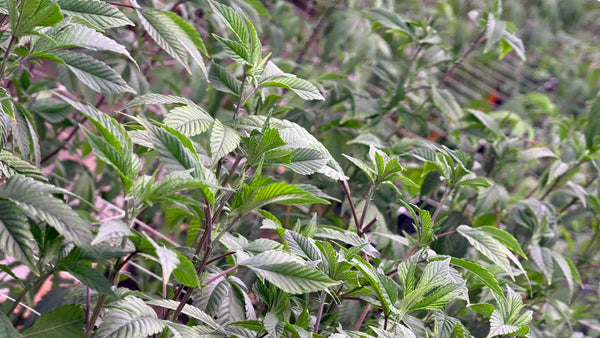
Understanding THCA Potency
Before diving into specific THCA flower dosage for beginners recommendations, it's crucial to understand how THCA potency works and how to interpret the information provided on product labels and lab reports. This foundational knowledge will empower you to make informed decisions about your dosing strategy.
Reading Lab Reports and Percentage Calculations
THCA flower products should come with comprehensive lab reports that detail the cannabinoid profile, including THCA percentages. These reports typically show THCA content as a percentage of the total weight. For example, a product labeled as 20% THCA contains 200 milligrams of THCA per gram of flower material. Understanding this conversion is essential for accurate dosing calculations.
When examining lab reports, pay attention to the testing date and batch information to ensure you're looking at data relevant to your specific product. Different batches of the same strain can vary significantly in potency, which directly impacts your dosing calculations.
Converting Weight to Active Compound
Converting flower weight to actual THCA milligrams is a critical skill for precise dosing. The basic formula is: Weight in grams × THCA percentage = THCA milligrams. For instance, 0.5 grams of 15% THCA flower contains 75 milligrams of THCA (0.5 × 150mg = 75mg).
This calculation becomes more complex when dealing with different consumption methods. Raw consumption preserves the THCA content, while heating converts THCA to THC through decarboxylation, typically with about 87% efficiency. Understanding these conversions helps you predict the active compound content regardless of your chosen consumption method.
Bioavailability Factors
Bioavailability refers to the proportion of an administered substance that reaches systemic circulation and produces effects. Different consumption methods offer varying bioavailability rates for THCA. Raw consumption through juicing or smoothies may have different absorption rates compared to tinctures or capsules, which can significantly impact your effective dose.
Factors affecting bioavailability include the presence of food in your digestive system, individual digestive health, and the specific formulation of your THCA product. Products that include additional compounds like terpenes or other cannabinoids may enhance absorption through the entourage effect.
Individual Metabolism and Tolerance Considerations
Your body's metabolism plays a crucial role in determining your optimal THCA flower dose. Factors such as liver function, digestive health, and genetic variations in cannabinoid receptors all influence how effectively your body processes THCA. Some individuals may require higher doses to achieve the same effects experienced by others at lower doses.
Tolerance development is another critical consideration, particularly for regular users. While THCA doesn't typically produce the same tolerance patterns as THC, consistent use can lead to diminished effects over time. This is why cycling protocols and periodic tolerance breaks are often recommended for long-term users.
Beginner Dosing Protocol
For those new to THCA flower, establishing a safe and effective dosing protocol is essential. The fundamental principle of THCA flower dosage for beginners centers on the "start low, go slow" approach, which minimizes the risk of adverse effects while allowing you to identify your optimal dose gradually.
Starting Low: Initial Dose Recommendations
New users should begin with 50-100mg of THCA for their first dose, regardless of their ultimate therapeutic goals. This conservative starting point allows you to assess your individual sensitivity and response patterns without risk of overwhelming effects. Even if this initial dose produces no noticeable effects, it provides valuable baseline information for future adjustments.
For particularly sensitive individuals or those with no prior cannabis experience, starting as low as 25mg may be appropriate. Remember that it's always easier to increase your dose than to manage the discomfort of taking too much too quickly.
The Go Slow Approach: Gradual Increase Timeline
After establishing your baseline response with your initial dose, increase gradually over time. A typical progression might involve increasing by 25-50mg every 3-5 days, allowing sufficient time to evaluate the effects of each dose level. This methodical approach helps you identify your minimum effective dose while avoiding unnecessary side effects.
The gradual increase also allows your endocannabinoid system to adapt to the presence of THCA, potentially improving your overall response and reducing the likelihood of developing rapid tolerance. Patience during this phase is crucial for long-term success with THCA supplementation.
Observation Period and Effect Monitoring
Each dose level requires adequate observation time to fully assess its effects. THCA's onset time can vary significantly based on consumption method, ranging from 30 minutes for tinctures to several hours for some raw preparations. Plan to monitor effects for at least 4-6 hours after each dose to capture the full duration of activity.
Pay attention to both positive effects and any adverse reactions. Beneficial effects might include improved mood, better sleep, reduced discomfort, or enhanced overall well-being. Adverse effects could include digestive upset, drowsiness, or any unexpected symptoms that develop after consumption.
Record Keeping and Dosing Journals
Maintaining a detailed dosing journal is invaluable for optimizing your THCA dosing strategy. Record the date, time, dose amount, consumption method, and any effects experienced. Include notes about other factors that might influence your response, such as food intake, stress levels, sleep quality, and any medications taken.
This documentation helps identify patterns in your response and makes it easier to fine-tune your dosing strategy over time. It also provides valuable information to share with healthcare providers if you choose to discuss your THCA use with medical professionals.
Warning Signs and When to Reduce
Be aware of warning signs that indicate you may need to reduce your dose or discontinue use temporarily. These might include persistent digestive issues, excessive drowsiness that interferes with daily activities, mood changes, or any symptoms that concern you. If you experience significant adverse effects, reduce your dose or take a break from THCA use.
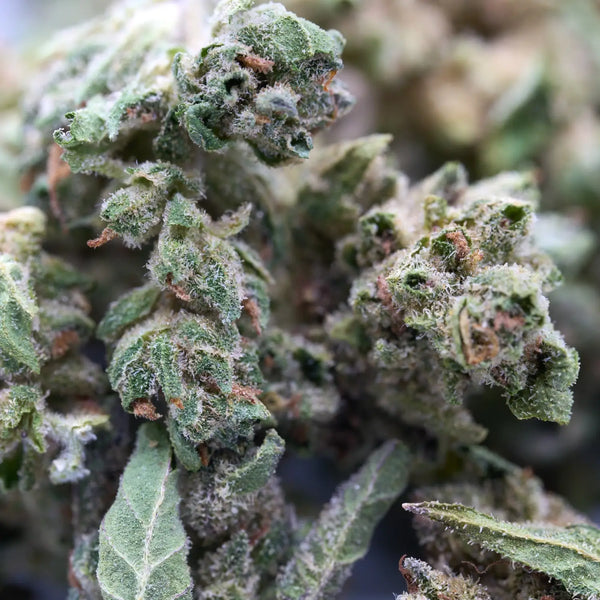
Consumption Method Dosing
Different consumption methods require different dosing approaches due to varying bioavailability, onset times, and duration of effects. Understanding these differences is crucial for optimizing your THCA flower dose regardless of your preferred consumption method.
Raw Consumption Dosing
Raw THCA consumption preserves the cannabinoid in its acidic form, avoiding the psychoactive effects associated with THC while potentially providing unique therapeutic benefits. This approach is particularly appealing for users seeking wellness benefits without any intoxicating effects.
Fresh Juice Dosing: When juicing fresh THCA flower, typical doses range from 200-500mg of THCA content. The high dose range accounts for potential variations in extraction efficiency and the dilute nature of fresh juice preparations. Start with smaller amounts and gradually increase based on your response and tolerance.
Smoothie Integration: Adding THCA flower to smoothies typically involves 100-300mg of THCA content. The presence of fats and other nutrients in smoothie ingredients may enhance absorption, so start on the lower end of this range to assess your individual response.
Tincture Formulations: THCA tinctures offer precise dosing control with typical ranges of 25-100mg per dose. Sublingual administration can provide faster onset compared to digestive methods, making tinctures ideal for users who need consistent, predictable effects.
Capsule Products: Pre-made THCA capsules typically contain 50-200mg per capsule, offering convenient and consistent dosing. The encapsulation may slow onset time but often provides longer-lasting effects compared to other consumption methods.
Heated Consumption Considerations
When THCA flower is heated, it undergoes decarboxylation, converting to THC and producing psychoactive effects. This fundamentally changes both the dosing requirements and the expected effects profile.
Decarboxylation Conversion Rates: The conversion from THCA to THC through heating is approximately 87% efficient under optimal conditions. This means that 100mg of THCA will convert to roughly 87mg of THC when properly heated. However, conversion rates can vary based on temperature, time, and heating method.
THC Dosing Post-Heating: If you choose to heat your THCA flower, apply standard THC dosing guidelines, typically starting with 2.5-5mg of converted THC for beginners. Remember that heating your THCA flower fundamentally changes the product's effects profile.
Onset Time and Duration Variations: Heated THCA consumption typically produces faster onset times (15-30 minutes for inhalation, 30-90 minutes for edibles) but may have shorter overall duration compared to raw THCA consumption.
THCA Microdosing
THCA microdosing represents a sophisticated approach to cannabinoid supplementation that focuses on minimal effective doses to support overall wellness without producing noticeable intoxicating effects. This protocol is particularly attractive for users seeking daily wellness support while maintaining full functionality.
Benefits of the Microdosing Approach
Microdosing THCA may offer several advantages over higher-dose protocols. Lower doses are less likely to produce tolerance, making them more sustainable for long-term use. They also minimize the risk of adverse effects while potentially providing consistent wellness support throughout the day.
The subtlety of microdosing effects can help maintain the therapeutic benefits of THCA while avoiding any lifestyle disruption. Many users report improved mood stability, better stress management, and enhanced overall well-being without the noticeable effects associated with higher doses.
Typical Microdosing Ranges
THCA microdosing protocols typically involve 10-50mg of THCA per dose, with most users finding their sweet spot between 15-30mg. These doses are intended to work below the threshold of noticeable effects while still providing therapeutic benefits through endocannabinoid system modulation.
Start with 10-15mg and increase gradually every few days until you identify subtle but positive changes in your overall well-being. The goal is to find the minimum dose that provides noticeable improvements in areas like sleep quality, stress response, or overall mood.
Frequency and Scheduling
Microdosing schedules vary based on individual goals and responses. Some users prefer once-daily dosing, typically in the morning to support overall daily wellness. Others may benefit from twice-daily dosing, with smaller amounts in the morning and evening.
Consider implementing dosing breaks or cycling protocols even with microdoses to prevent tolerance development and maintain sensitivity to THCA's effects. A common approach involves five days on, two days off, or three weeks on, one week off.
Subtle Effect Recognition and Tracking
Recognizing microdosing effects requires careful attention to subtle changes in your daily experience. Keep detailed notes about sleep quality, energy levels, stress response, and overall mood. These changes may be gradual and only become apparent when comparing your baseline to your dosing periods.
Consider using rating scales or objective measures to track changes over time. Simple daily ratings of sleep quality, energy levels, and mood can help identify patterns and optimize your microdosing protocol.
Therapeutic Dosing Ranges
Higher therapeutic doses of THCA may be appropriate for specific wellness goals or when working under professional guidance. These ranges require careful consideration of individual tolerance, health status, and specific therapeutic objectives.
Wellness Maintenance Dosing
For general wellness maintenance, daily THCA doses typically range from 100-300mg divided throughout the day. This range provides more robust endocannabinoid system support while remaining below levels that typically produce noticeable effects in most users.
Wellness maintenance dosing often works best when divided into 2-3 smaller doses throughout the day rather than a single large dose. This approach maintains more consistent cannabinoid levels and may improve overall effectiveness.
Targeted Relief Protocols
When using THCA for targeted relief of specific concerns, doses may range from 300-800mg as needed. This higher dosing range requires careful attention to timing, individual response, and potential interactions with other medications or supplements.
Targeted dosing often works best when timed in relation to specific symptoms or circumstances. Work with healthcare providers familiar with cannabinoid therapeutics to develop appropriate protocols for your specific needs.
Intensive Support Considerations
Intensive THCA protocols involving 800-1500mg or higher should only be considered under professional medical supervision. These high-dose protocols may be appropriate for specific medical conditions but require careful monitoring and professional guidance.
High-dose protocols typically involve gradual escalation over weeks or months, with careful attention to liver function, drug interactions, and other health parameters. Never attempt high-dose protocols without appropriate medical supervision.
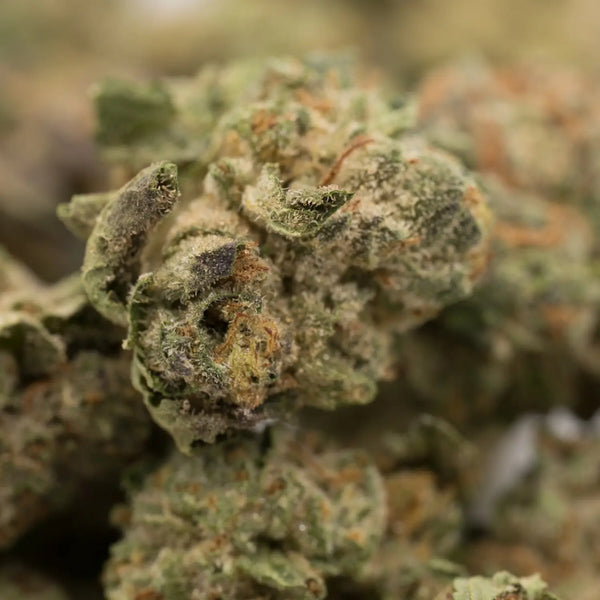
Factors Affecting Dosage Requirements
Understanding the various factors that influence your optimal THCA flower dose helps you make more informed decisions about your dosing strategy and adjust your protocol based on changing circumstances.
Body Weight and Size Considerations
While the relationship between body weight and THCA dosing isn't as straightforward as with some medications, larger individuals may require higher doses to achieve the same effects as smaller individuals. However, this relationship isn't linear, and other factors often play more significant roles in determining optimal dosage.
Use body weight as a general starting point rather than a definitive dosing guide. A person weighing 200 pounds might start with slightly higher doses than someone weighing 120 pounds, but individual metabolism and sensitivity often matter more than size alone.
Metabolic Rate and Individual Processing
Your body's metabolic rate significantly influences how quickly you process and eliminate THCA. Individuals with faster metabolisms may require more frequent dosing or higher individual doses to maintain consistent effects. Conversely, those with slower metabolisms might need lower doses or longer intervals between doses.
Factors affecting metabolic processing include age, overall health status, liver function, and genetic variations in enzyme production. Pay attention to how your body responds to different doses and timing to optimize your individual protocol.
Prior Cannabis Experience
Previous experience with cannabis products can influence your THCA dosage requirements, but not always in predictable ways. Some individuals with extensive THC experience may find they need higher THCA doses, while others may be more sensitive due to endocannabinoid system changes from prior use.
Don't assume that experience with other cannabis products directly translates to THCA requirements. Treat THCA as a distinct compound and establish your dosing requirements through careful experimentation regardless of your prior experience.
Health Conditions and Medical Considerations
Underlying health conditions can significantly impact your THCA dosage requirements and safety considerations. Digestive disorders may affect absorption, liver conditions might impact metabolism, and certain medications could interact with THCA.
Always discuss THCA use with healthcare providers familiar with your medical history. Certain conditions may require dose modifications, additional monitoring, or complete avoidance of THCA products.
Lifestyle Factors
Diet, exercise, sleep patterns, and stress levels all influence how your body processes and responds to THCA. Changes in any of these areas might require dosing adjustments to maintain consistent effects.
Consider how lifestyle changes might impact your THCA response. A new exercise routine, dietary changes, or periods of high stress might require temporary dosing modifications to maintain your desired effects.
Common Dosing Mistakes to Avoid
Learning from common mistakes can help you avoid setbacks and optimize your THCA dosing protocol more efficiently. These mistakes are particularly common among new users but can affect anyone using THCA products.
Taking Too Much Too Fast
The most common mistake is escalating doses too quickly in pursuit of immediate results. This approach increases the risk of adverse effects and may lead to tolerance development. Remember that finding your optimal dose is a process that requires patience and gradual adjustment.
Resist the temptation to double or triple your dose if you don't immediately notice effects. THCA's benefits often develop gradually, and subtle improvements may only become apparent over time with consistent use.
Inconsistent Dosing Patterns
Inconsistent dosing makes it difficult to assess effectiveness and can lead to unpredictable results. Try to maintain consistent timing, dosing amounts, and consumption methods while establishing your optimal protocol.
Once you've identified your optimal THCA flower dosage, maintain consistency for at least several weeks before making adjustments. This consistency allows you to properly evaluate the effectiveness of your current protocol.
Ignoring Product Quality Variations
Not all THCA products are created equal. Variations in potency, purity, and consistency between different products or batches can significantly impact your dosing requirements. Always check lab reports and verify potency information before adjusting your dosing based on a new product.
When switching between different THCA products or suppliers, treat it as a new dosing experiment and start conservatively, even if the labeled potency appears similar to your previous product.
Skipping Documentation
Failing to maintain adequate records makes it difficult to identify optimal dosing patterns and track your progress over time. Keep detailed notes about doses, timing, effects, and any relevant circumstances that might influence your response.
Your dosing journal becomes invaluable when making adjustments or discussing your THCA use with healthcare providers. Don't rely on memory alone to track your dosing patterns and responses.
Advanced Dosing Strategies
Once you've established your baseline THCA dosage guide requirements, you may want to explore more sophisticated dosing strategies to optimize your results or address specific goals.
Cycling Protocols and Tolerance Management
Regular cycling can help prevent tolerance development and maintain sensitivity to THCA's effects. Common cycling patterns include periodic breaks (such as one week off every month) or alternating dose levels to prevent adaptation.
Consider implementing micro-cycles with slight dose variations throughout the week or longer cycles with periodic breaks. The optimal cycling pattern varies between individuals and may require experimentation to identify what works best for you.
Stacking and Combination Approaches
Advanced users may explore combining THCA with other cannabinoids, terpenes, or natural supplements to enhance effects or address multiple wellness goals simultaneously. These combinations require careful consideration of interactions and cumulative effects.
When stacking multiple compounds, start with lower doses of each component and increase gradually while monitoring for unexpected interactions or effects. Document combination protocols carefully to identify synergistic effects or problematic interactions.
Timing Optimization
Optimizing the timing of your THCA doses in relation to your circadian rhythm, meals, exercise, or specific symptoms can enhance effectiveness and minimize adverse effects. Some users find morning dosing supports daily wellness, while others prefer evening dosing for sleep support.
Experiment with different timing strategies while keeping other variables consistent. Pay attention to how timing affects both the onset and duration of effects, as well as any impact on sleep, energy, or daily function.
Monitoring and Adjustment Strategies
Successful long-term THCA use requires ongoing monitoring and periodic adjustments to maintain optimal effects while minimizing adverse reactions.
Effect Tracking Methods
Develop systematic methods for tracking THCA's effects on your wellness goals. This might include daily rating scales for specific symptoms, objective measures like sleep tracking, or periodic comprehensive wellness assessments.
Consider using smartphone apps or simple spreadsheets to track your responses over time. Look for patterns in your data that might suggest optimal dosing times, dose levels, or cycling patterns.
Adjustment Triggers
Identify specific criteria that would trigger dose adjustments. These might include changes in effectiveness, the development of tolerance, changes in health status, or modifications to other medications or supplements.
Establish clear guidelines for when and how to modify your dosing protocol. This systematic approach prevents impulsive changes that might disrupt your progress or make it difficult to identify optimal parameters.
Professional Consultation Timing
Know when to seek professional guidance for your THCA use. This includes initial consultation when starting THCA, periodic check-ins during long-term use, and immediate consultation if you experience concerning symptoms or interactions.
Healthcare providers familiar with cannabinoid therapeutics can provide valuable guidance for optimizing your protocol and ensuring safe use, especially when using higher doses or managing complex health conditions.
Special Population Considerations
Certain groups may require modified dosing approaches or additional precautions when using THCA products.
Elderly Users
Older adults may be more sensitive to THCA effects and may require lower starting doses and slower dose escalation. Age-related changes in metabolism, liver function, and medication use all influence THCA dosing requirements.
Start elderly users with particularly conservative doses (25-50mg) and increase very gradually while monitoring for any adverse effects or interactions with existing medications.
Pregnancy and Nursing
Current evidence regarding THCA safety during pregnancy and nursing is insufficient to recommend use. Women who are pregnant, planning pregnancy, or nursing should avoid THCA products unless specifically recommended by healthcare providers familiar with their medical situation.
Chronic Conditions and Medication Interactions
Individuals with chronic health conditions or those taking multiple medications require special consideration when using THCA. Certain conditions may be contraindications for THCA use, while others may require dose modifications or additional monitoring.
Always discuss THCA use with healthcare providers familiar with your medical history and current medications. Some drug interactions may require avoiding THCA entirely, while others might be managed through careful timing or dose adjustments.
Frequently Asked Questions
Q: How long should I wait before increasing my THCA dose? A: Wait at least 3-5 days between dose increases to allow your body to fully adapt and respond to each dose level. This patience helps you identify your minimum effective dose without overshooting.
Q: Can I take too much THCA? A: While THCA is generally well-tolerated, taking too much can cause adverse effects like digestive upset, drowsiness, or discomfort. Always start low and increase gradually to minimize this risk.
Q: Should I take THCA with food? A: Taking THCA with food, particularly foods containing healthy fats, may improve absorption. However, individual responses vary, so experiment to find what works best for you.
Q: How long do THCA effects last? A: THCA effects can last 4-8 hours depending on the dose, consumption method, and individual factors. Raw consumption methods may provide longer-lasting effects compared to heated methods.
Q: Can I drive while using THCA? A: Raw THCA should not produce impairment, but individual responses vary. Never drive if you feel impaired, and be aware that heated THCA converts to psychoactive THC.
Q: Will THCA show up on drug tests? A: THCA may convert to THC in certain testing conditions, potentially causing positive drug tests. Consult with employers or relevant authorities about their policies regarding hemp-derived products.
Conclusion
Finding your perfect THCA flower dosage is a highly individual process that requires patience, careful observation, and systematic experimentation. The principles outlined in this comprehensive guide provide a framework for safe and effective THCA use, but remember that your optimal dosing protocol may differ significantly from others.
The importance of starting low and going slow cannot be overstated. This conservative approach minimizes risks while allowing you to identify your minimum effective dose, which often proves to be lower than initially expected. Your optimal THCA flower dose is the smallest amount that provides your desired benefits without causing adverse effects.
Consistency in dosing, timing, and documentation forms the foundation of successful THCA supplementation. Maintain detailed records of your doses, effects, and any relevant circumstances that might influence your response. This information becomes invaluable for optimizing your protocol and provides essential data if you choose to work with healthcare providers.
Professional guidance becomes particularly valuable when using higher doses, managing complex health conditions, or experiencing unexpected responses to THCA. Healthcare providers familiar with cannabinoid therapeutics can provide personalized recommendations and monitor for potential interactions or complications.
Remember that THCA research is still evolving, and individual responses can be highly variable. What works perfectly for one person may not be suitable for another, and your own optimal dose may change over time due to tolerance development, health changes, or evolving wellness goals.
Approach THCA use with curiosity, patience, and respect for its potential effects. By following the principles outlined in this guide and maintaining open communication with qualified healthcare providers, you can safely explore THCA flower products and potentially discover valuable wellness benefits.
The journey to finding your perfect THCA dosage is ultimately about understanding your body's unique responses and developing a sustainable protocol that supports your wellness goals while minimizing risks. Take your time, stay informed, and prioritize safety throughout your exploration of this fascinating cannabinoid.
This guide serves as educational information only and should not replace professional medical advice. Always consult with healthcare providers familiar with cannabinoid therapeutics before beginning any THCA supplementation protocol, especially if you have underlying health conditions or take medications.

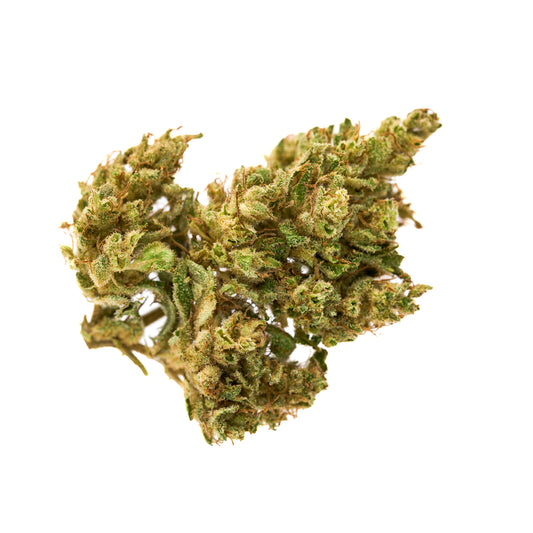
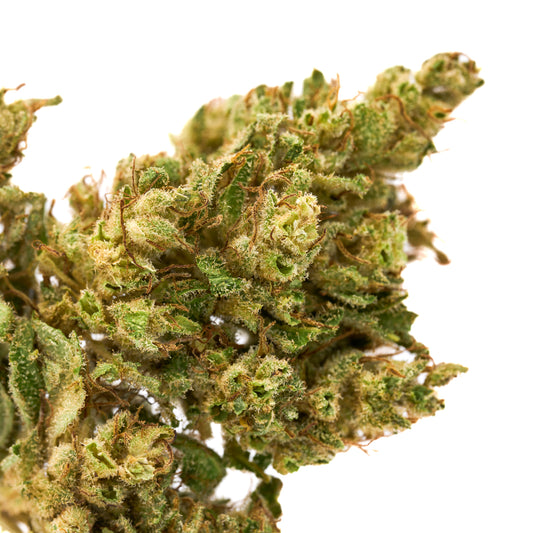
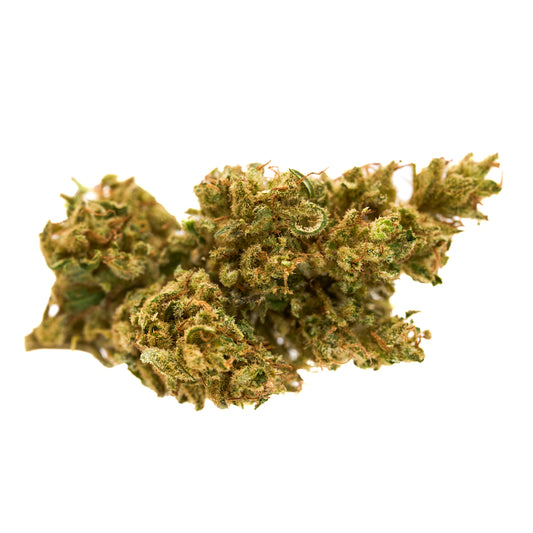
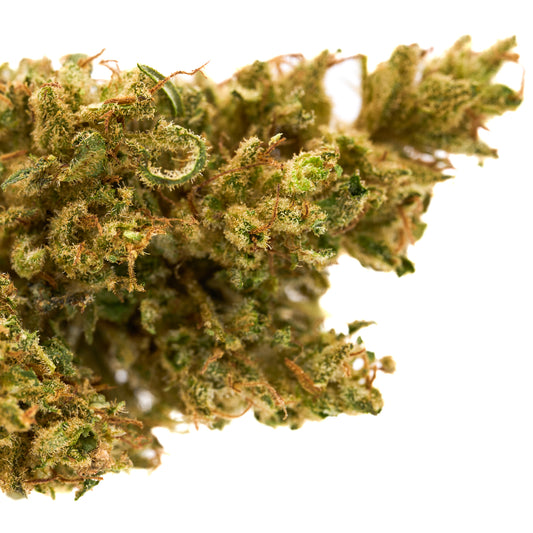
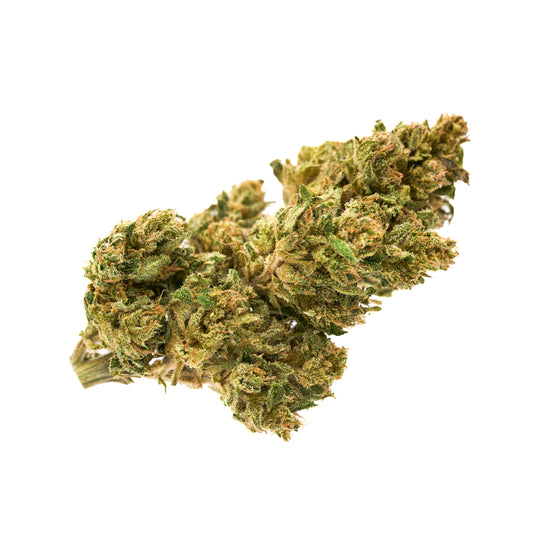
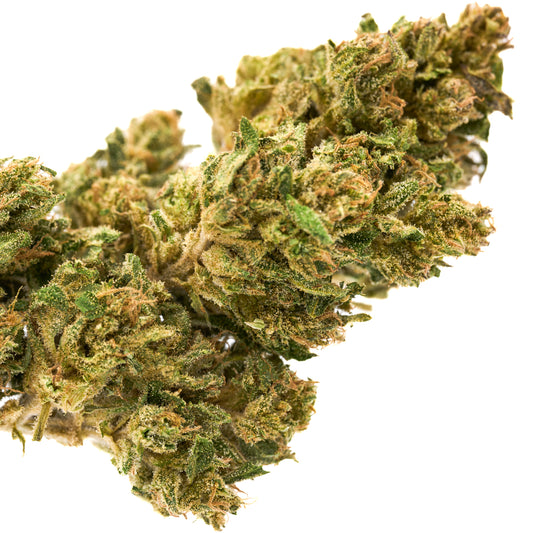





Leave a comment
Please note, comments need to be approved before they are published.